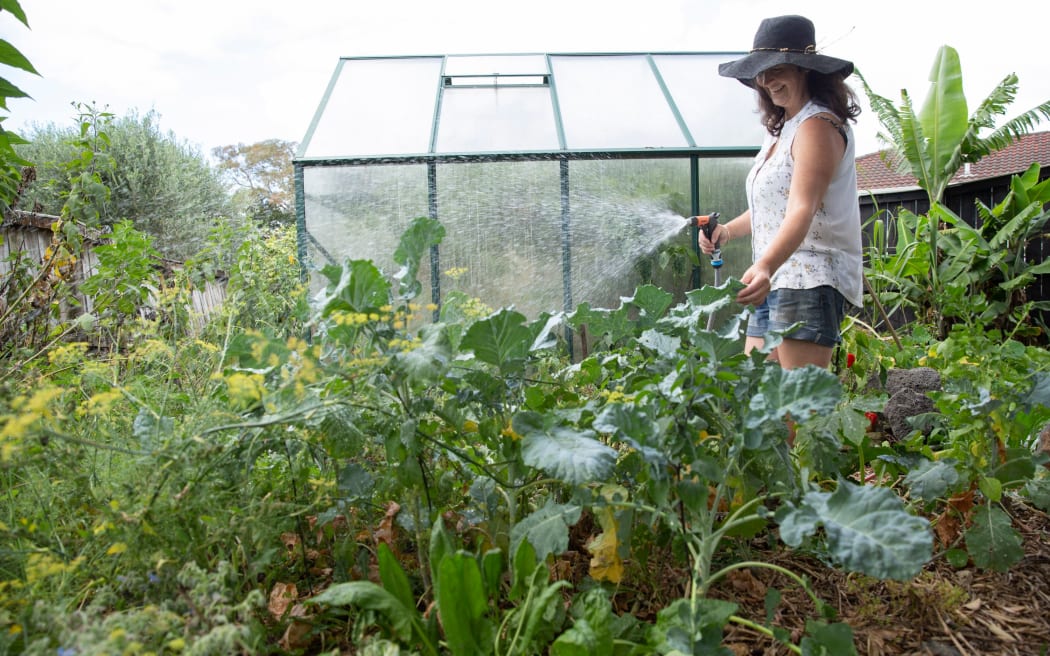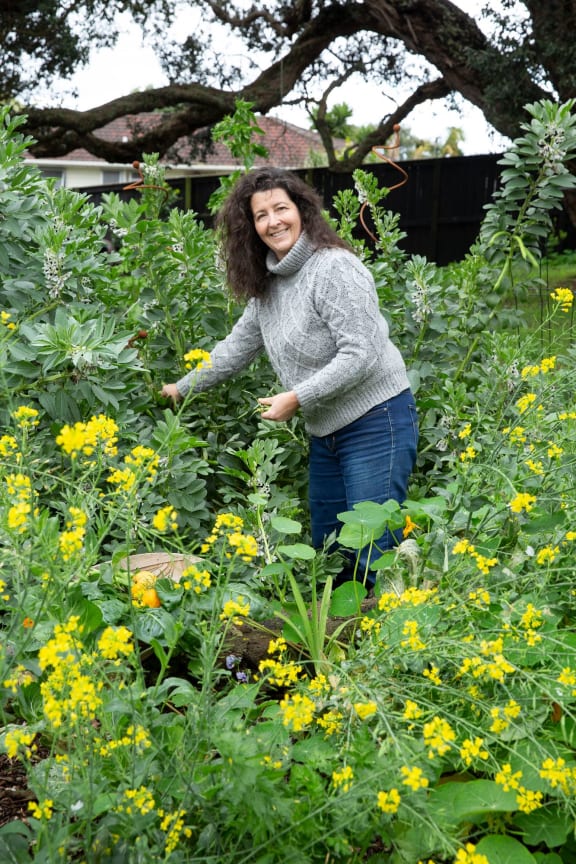Any compost is better than no compost. It can get complicated, so start simple, maybe just with a leaf litter bin.
I originally started with a worm farm before a compost bin, purely because it felt easier – just adding kitchen scraps.
I graduated to a black plastic compost bin and then, as I was running out of space and was reluctant to buy more plastic, my partner built an old-fashioned compost heap by my veggie patch out of old decking timber.

Bri DiMattina Photo: Lotiie hedley
There is so much to know about compost that, when you start reading about it, it can seem like a huge commitment. I can safely say that any method I have attempted, even poorly, has happily provided compost long before I knew what I was doing – mother nature is great like that.
I have used what can best be described as the ‘lasagne’ method, which amounts to making nice layers of brown and green garden waste, and plant-based kitchen scraps.
What often really happens is that I just dump stuff onto the pile. The thing I have been careful about is not including seed heads of plants I don’t want back in the garden, but including ones that I don’t mind reappearing as they often germinate in the compost. I figured I would rather have herbs and bee-friendly plants self-sowing around my garden, taking up all the spare spaces until I needed them back, and that is what has happened.
Borage, parsley, perpetual spinach and nasturtiums pop up everywhere around the garden, including the pathways.
The best compost has come from an old bin I rescued and put under a large tree. I dump all the leaf litter that collects on my driveway and deck in it, and nothing else. This is not by design, it’s just the furthest bin from the house so it doesn’t get anything else. The compost from that bin alone is pure black gold.
My next best discovery has been the in-ground worm towers for the planter boxes. They are super easy to use and really help to get nutrients down into a planter box in a slow-release fashion.
When we moved in to our house, well over a decade ago, there was one planter box on the edge of the courtyard. I really struggled with keeping the soil rich – it was dry and lacked any form of nutrients, so nothing would grow well.
I dug everything out and put a layer of manure and mulch in the bottom, and replaced half the soil with better soil from my garden, but it wasn’t long before it was depleted again.
I was actively looking for a solution and discovered this method of makeshift worm towers.
They are a wide plastic tube (like an extra wide drainpipe) dug down into the planter box, which are used like a worm farm would be.
I have three new planter boxes now all bursting with produce. One had eight tomato plants, basil and beans bursting out of it all summer long, and the other had asparagus that was big and lush. I then installed one in the greenhouse, tediously digging a long narrow hole to retrofit this worm tower, and the passionfruit plant that exploded forth has been astounding.

Bri DiMattina Photo: Lottie Hedley.
It goes to show even small-scale composting like using a worm tower can have big rewards in the garden.
I’m at a point where I don’t have enough kitchen scraps to go around, so the main compost pile misses out, as the expediency of the worm towers takes over.
If you have a balcony garden and there really is no other option, the best advice I have is to dump your banana peels in the blender and blitz with lots of water to make a nutritious plant smoothie.
A little bit of seaweed, wild-gathered leaf litter (be sure it’s not sprayed) – all the things that would make great compost can be added this way, in much smaller doses, when you water your plants.
Extracted from Nostrana by Bri DiMattina. HarperCollins NZ, RRP $55. Photography credit: Lottie Hedley.

